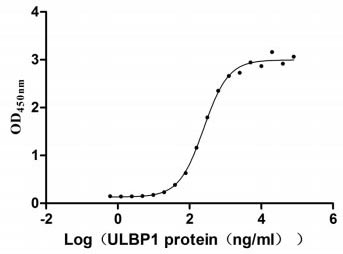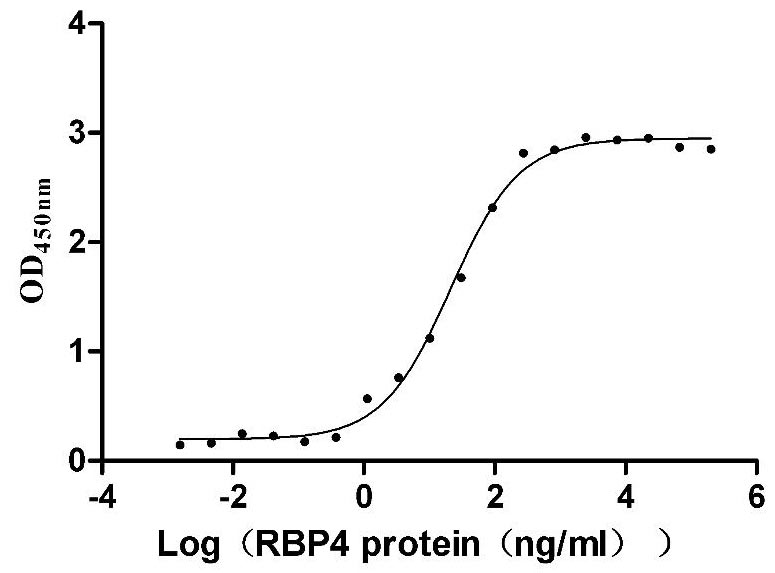Recombinant Human Potassium voltage-gated channel subfamily C member 1 (KCNC1)
-
货号:CSB-CF012018HU
-
规格:
-
来源:in vitro E.coli expression system
-
其他:
产品详情
-
基因名:KCNC1
-
Uniprot No.:
-
别名:KCNC1; Potassium voltage-gated channel subfamily C member 1; NGK2; Voltage-gated potassium channel subunit Kv3.1; Voltage-gated potassium channel subunit Kv4
-
种属:Homo sapiens (Human)
-
蛋白长度:Full length protein
-
表达区域:1-511
-
氨基酸序列MGQGDESERIVINVGGTRHQTYRSTLRTLPGTRLAWLAEPDAHSHFDYDPRADEFFFDRH PGVFAHILNYYRTGKLHCPADVCGPLYEEELAFWGIDETDVEPCCWMTYRQHRDAEEALD SFGGAPLDNSADDADADGPGDSGDGEDELEMTKRLALSDSPDGRPGGFWRRWQPRIWALF EDPYSSRYARYVAFASLFFILVSITTFCLETHERFNPIVNKTEIENVRNGTQVRYYREAE TEAFLTYIEGVCVVWFTFEFLMRVIFCPNKVEFIKNSLNIIDFVAILPFYLEVGLSGLSS KAAKDVLGFLRVVRFVRILRIFKLTRHFVGLRVLGHTLRASTNEFLLLIIFLALGVLIFA TMIYYAERIGAQPNDPSASEHTHFKNIPIGFWWAVVTMTTLGYGDMYPQTWSGMLVGALC ALAGVLTIAMPVPVIVNNFGMYYSLAMAKQKLPKKKKKHIPRPPQLGSPNYCKSVVNSPH HSTQSDTCPLAQEEILEINRAGRKPLRGMSI
Note: The complete sequence including tag sequence, target protein sequence and linker sequence could be provided upon request. -
蛋白标签:N-terminal 10xHis-tagged
-
产品提供形式:Liquid or Lyophilized powder
Note: We will preferentially ship the format that we have in stock, however, if you have any special requirement for the format, please remark your requirement when placing the order, we will prepare according to your demand. -
缓冲液:Lyophilized from Tris/PBS-based buffer, 6% Trehalose, pH 8.0
-
储存条件:Store at -20°C/-80°C upon receipt, aliquoting is necessary for mutiple use. Avoid repeated freeze-thaw cycles.
-
保质期:The shelf life is related to many factors, storage state, buffer ingredients, storage temperature and the stability of the protein itself.
Generally, the shelf life of liquid form is 6 months at -20°C/-80°C. The shelf life of lyophilized form is 12 months at -20°C/-80°C. -
货期:Basically, we can dispatch the products out in 1-3 working days after receiving your orders. Delivery time may differ from different purchasing way or location, please kindly consult your local distributors for specific delivery time.Note: All of our proteins are default shipped with normal blue ice packs, if you request to ship with dry ice, please communicate with us in advance and extra fees will be charged.
-
注意事项:Repeated freezing and thawing is not recommended. Store working aliquots at 4°C for up to one week.
-
Datasheet & COA:Please contact us to get it.
相关产品
靶点详情
-
功能:Voltage-gated potassium channel that plays an important role in the rapid repolarization of fast-firing brain neurons. The channel opens in response to the voltage difference across the membrane, forming a potassium-selective channel through which potassium ions pass in accordance with their electrochemical gradient. Can form functional homotetrameric channels and heterotetrameric channels that contain variable proportions of KCNC2, and possibly other family members as well. Contributes to fire sustained trains of very brief action potentials at high frequency in pallidal neurons.
-
基因功能参考文献:
- A recurrent de novo mutation in KCNC1 (c.959G>A, p.Arg320His) has been identified recently as one of the important genetic causes of progress myoclonic epilepsy. This recurrent mutation in KCNC1 was identified in the two brothers who showed characteristic features of myoclonus epilepsy and ataxia due to potassium channel mutation (MEAK). The asymptomatic mother was suspected as being mosaic for this mutation. PMID: 29428275
- KNCN1 p.R320H mutation causes MEAK syndrome. PMID: 28380698
- A nonsense variant in KCNC1 gene was identified in three family members with intellectual disability without seizures. PMID: 28145425
- reviews the phenotype/genotype of progressive myoclonus epilepsy and ataxia due to potassium channel mutation (MEAK)associated with KCNC1 mutations [review] PMID: 27629860
- KCNC1 produces a resurgent current during repolarization, ensuring enough repolarizing power to terminate each action potential. The current results from a combination of steep voltage-dependent gating kinetics and ultra-fast voltage-sensor relaxation. PMID: 26673941
- A recurrent KCNC1 de novo mutation, c.959G>A (p.Arg320His), is a new major cause for progressive myoclonus epilepsy. It has a dominant-negative loss-of-function effect. PMID: 25401298
- Findings show a decrease in Kv3.1b channel protein in schizophrenia neocortex, a deficit that is restored by antipsychotic drugs PMID: 23628987
- Describes localization in mouse brain of two isoforms - the longer is called b and the shorter is called a. PMID: 12091563
- Describes two rat isoforms of Kv3.1, alpha is the longer one and beta is the shorter one PMID: 1432046
- KChIP4a suppresses A-type Kv4 current via ER retention and enhancement of Kv4 closed-state inactivation. PMID: 23576435
- Although all KV3 subunit transcripts are significantly expressed at embryonic age in whole mouse brain extracts, only KV3.1, KV3.2 and KV3.4 subunit transgenic proteins are present. PMID: 21912965
- demonstrated that glycosylation was necessary for both DPP10 trafficking to the cell surface and functional interaction with Kv4 channels PMID: 22387313
- Kv3.1 channels are transported into axons by binding to kinesin I. PMID: 21106837
显示更多
收起更多
-
相关疾病:Epilepsy, progressive myoclonic 7 (EPM7)
-
亚细胞定位:Cell membrane; Multi-pass membrane protein. Cell projection, axon. Cell junction, synapse, presynaptic cell membrane.
-
蛋白家族:Potassium channel family, C (Shaw) (TC 1.A.1.2) subfamily, Kv3.1/KCNC1 sub-subfamily
-
数据库链接:
HGNC: 6233
OMIM: 176258
KEGG: hsa:3746
STRING: 9606.ENSP00000265969
UniGene: Hs.552896
Most popular with customers
-
Recombinant Human NKG2-D type II integral membrane protein (KLRK1), partial (Active)
Express system: Mammalian cell
Species: Homo sapiens (Human)
-
Recombinant Mouse Transthyretin (Ttr) (Active)
Express system: Mammalian cell
Species: Mus musculus (Mouse)
-
Recombinant Macaca fascicularis CD93 molecule (CD93), partial (Active)
Express system: Mammalian cell
Species: Macaca fascicularis (Crab-eating macaque) (Cynomolgus monkey)
-
Recombinant Macaca fascicularis C-type lectin domain family 4 member C(CLEC4C), partial (Active)
Express system: Mammalian cell
Species: Macaca fascicularis (Crab-eating macaque) (Cynomolgus monkey)
















